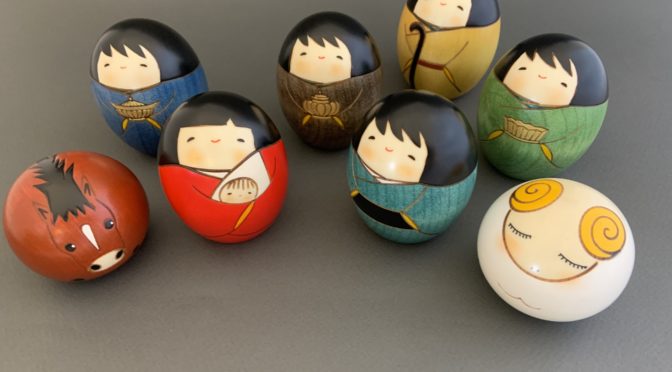Traditional Kokeshi dolls began to be made about two hundred years ago in the north east region of Japan known as the Tohoku region. It is commonly believed that the 18th C. Kijiya or woodworkers who originally specialized in household utensils began to make small dolls which they sold to the tourists who came to bathe in the many onsens or hot springs near their villages.
Kokeshi dolls traditionally consist of a basic cylindrical limbless body and a round head. Though the first dolls might have been unpainted, today most Kokeshi are painted in bright colors. The traditional colors used were red, yellow and purple. The woods used for Kokeshi vary though dogwood most popular.
Kokeshi is recognized as one of the traditional folk arts of Japan.
This nativity was made in the Usaburo Kokeshi workshop in Shibukawa in the Gunma prefecture. This workshop was started by Usaburo Okamoto in 1950. Mr. Usaburo was born in Shinto in 1917 and died in 2009.
What sets this Kokeshi Studio apart from others is that Mr. Usaburo introduced new styles and developed new techniques for the creation of his Kokeshi.
This Nativity exemplifies Mr. Usaburo’s innovations and is characteristic of the Kokeshi created in the Usaburo workshop. Each doll is egg shaped rather than having the traditional limbless body with a round head. Also, they are decorated using a method of carving and burning with Nichrome wire in addition to the traditional brushes and paint.
Usaburo Okamoto won numerous prizes for his work, including the Prize of the Minister of International Trade and Industry.
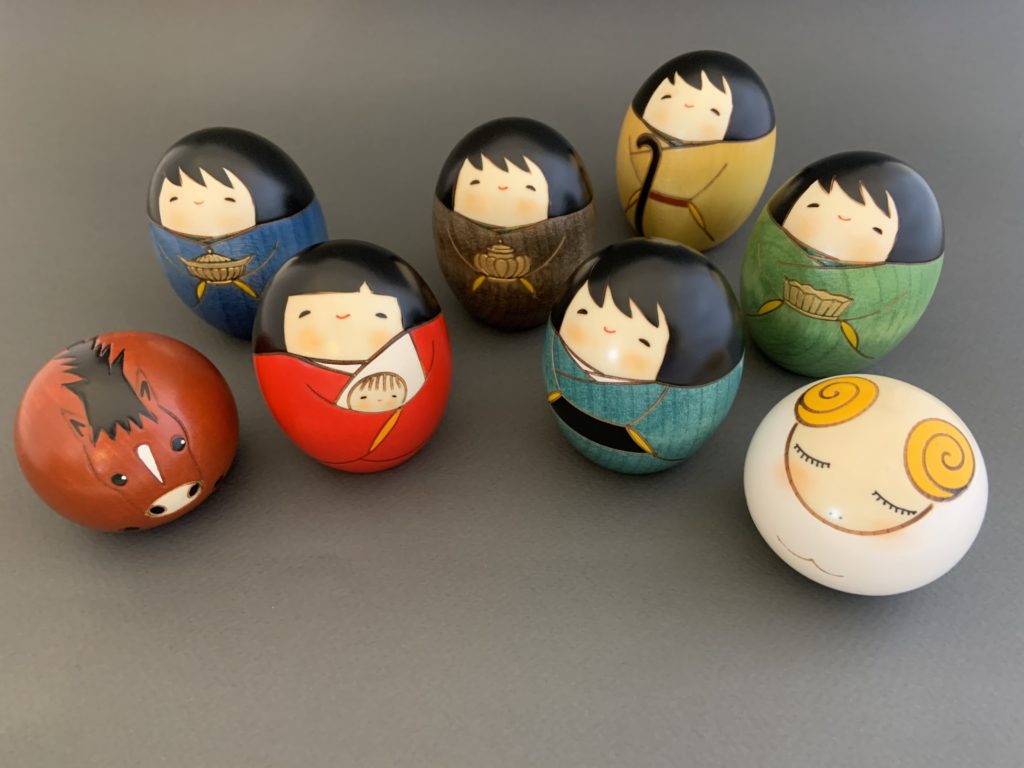
Kokeshi Nativity 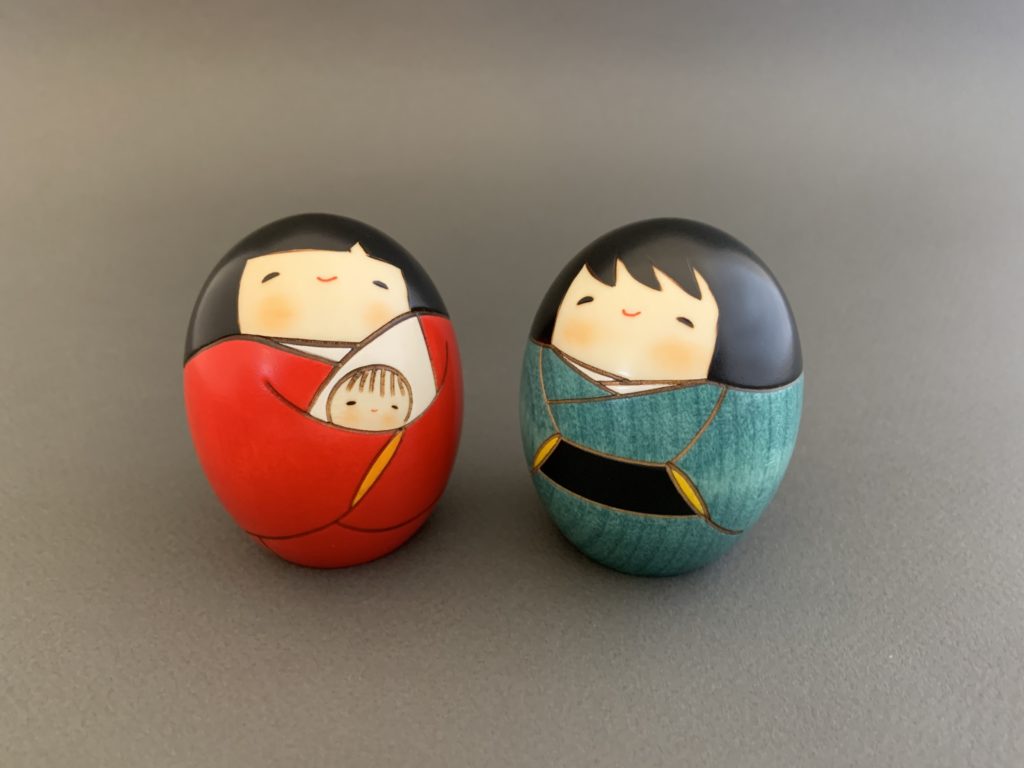
Mary with Jesus and Joseph 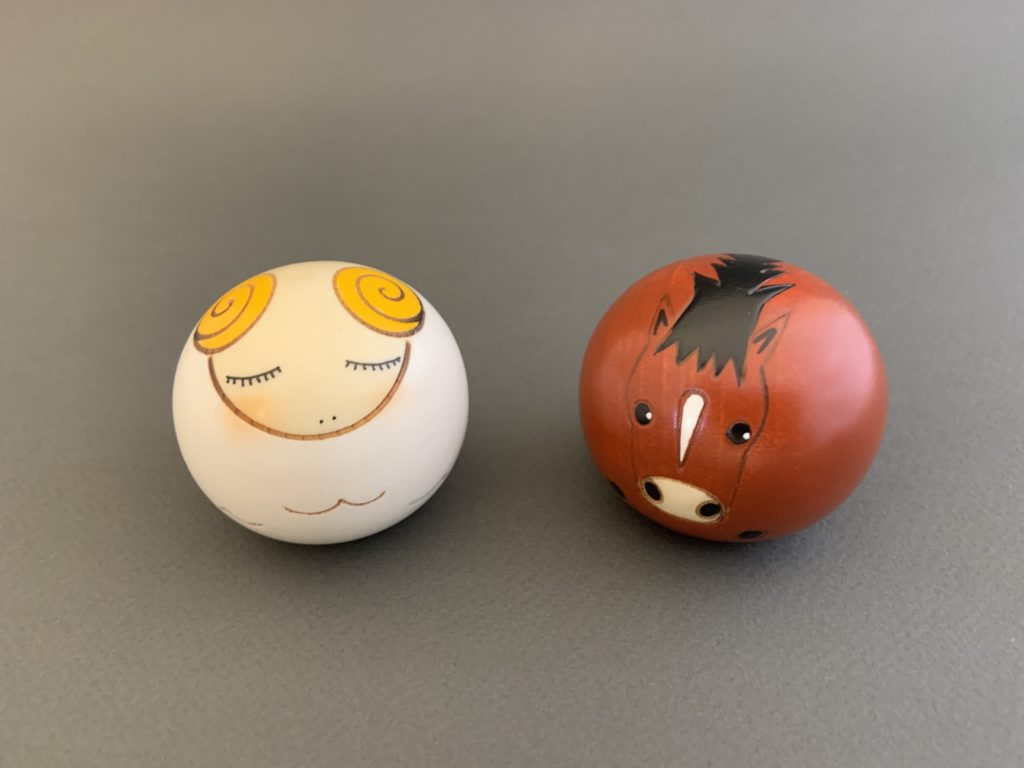
Ram and donkey 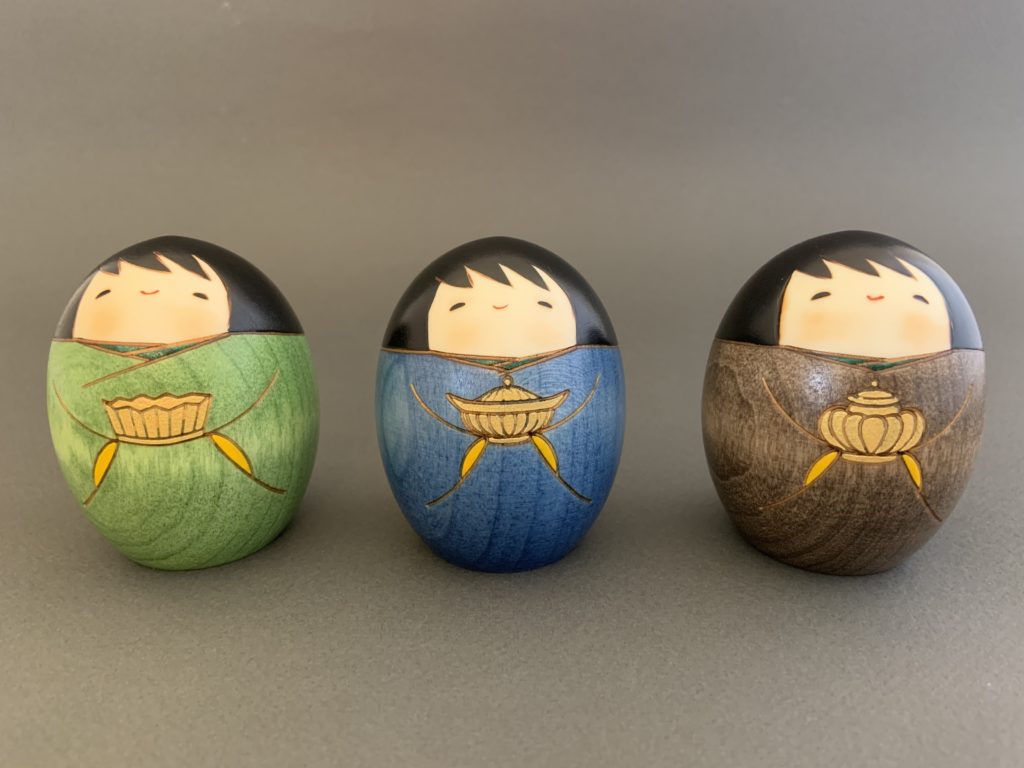
3 Magi 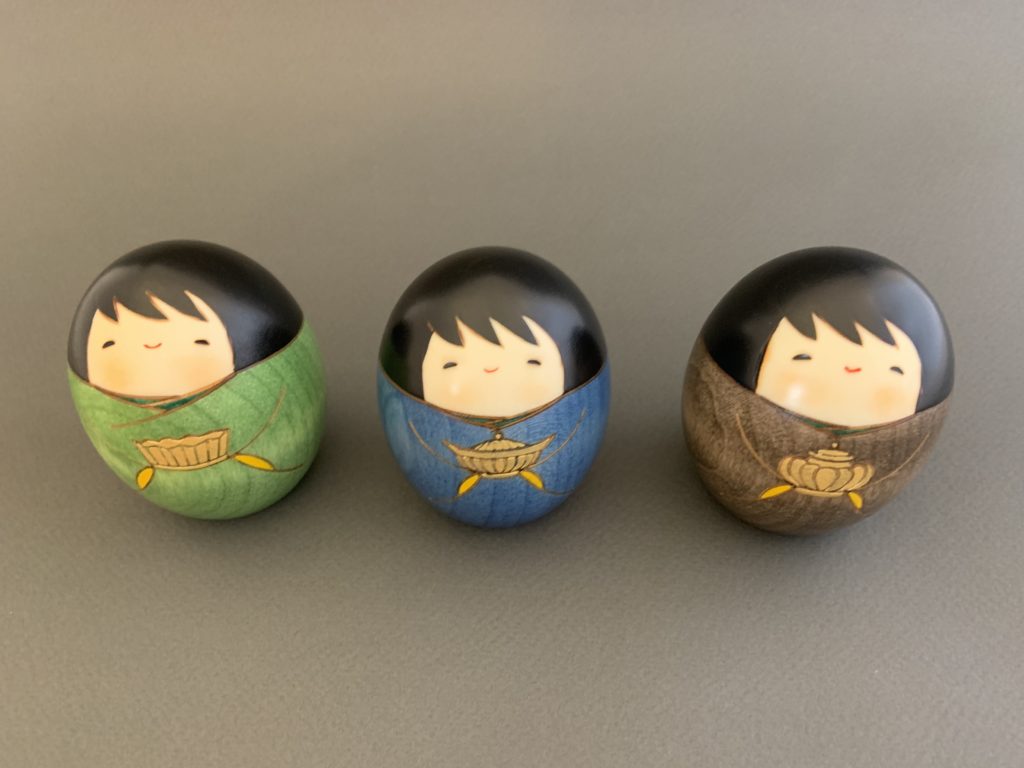
3 Magi
Artist: Usaburo Kokeshi Studio
Country: Japan
Material: Paint, Wood
Height: 7"
Width: 2.75"
Number of Pieces: 7
Mary holding the baby Jesus, Joseph, the three Magi, a ram and a donkey
Acquired: 2020

